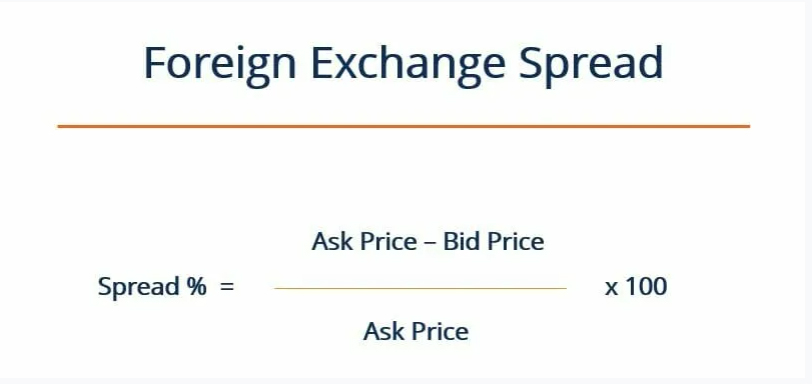Milliva offers Spread in Forex Trading Starting From 0.01

![]()
What is a Spread?
The spread in forex trading is the difference between the bid and ask prices for a given currency pair. The bid price is the highest amount.That a forex trader is willing to pay to purchase a specific currency. While the ask price is the lowest amount that a currency dealer is willing to accept for the currency.
Spread in Forex Explained
Most forex currency pairs are traded without commission, but the spread is a cost that is applied to every trade. Instead of charging a commission, all leveraged trading providers will include a spread in the cost of placing a trade. Which accounts for a higher ask price relative to the bid price. Variety of factors affects the size of spread. Including the currency pair you are trading and how volatile it is, the size of your trade, and the provider you are using.
How to Calculate Spread?
The formula for forex spread

Spread in Forex
Where:
Ask Price – The lowest price for which a currency dealer is willing to sell units of the currency.
Bid Price – The highest price at which a currency trader is willing to purchase units of the currency.
The “midpoint” of a forex spread is the theoretical price at which trade would occur. It is computed by adding ask and bid prices and dividing the total by two.
For example, if a dealer is willing to sell a certain number of units of a given currency for the equivalent of US$1.50, but a trader is only willing to buy a certain number of currency units for the equivalent of US$1.00, the midpoint price of the forex spread is (1.50+1.00)/2 = US$1.25.
Thus, traders and dealers can profit from differences in the valuation of a given currency between different parties. Certain forex trades, in some cases, follow the Greater Fool Theory, which exploits environments with asymmetrical information.

Difference Between High and Low Spread
It is important to note that the FX spread can change throughout the day. Ranging from a ‘high spread’ to a ‘low spread.’
Variety of factors such as volatility or liquidity influence spread. Some currency pairs, such as emerging market currency pairs, have a wider spread than major currency pairs.
When compared to emerging market currencies, your major currency pair’s trades in higher volumes. Higher trade volumes tend to result in lower spreads under normal conditions.Furthermore, it is well known that liquidity can dry up and spreads can before to major news events and between trading sessions.
High Spread
A high spread indicates a large difference between the bid and ask prices. When compared to major currency pairs, emerging market currency pairs typically have a high spread.
A higher spread than usual usually indicates either high market volatility or a lack of liquidity due to after-hours trading. Spreads can be higher dramatically before major news events or during major shocks (Brexit, US Elections).
Low Spread:
A low spread indicates that the difference between the bid and ask price is small. It is best to trade when spreads are low, such as during major forex sessions. A low spread typically indicates low volatility and high liquidity.
Trade with Lowest Spread in Milliva:
Milliva forex trading platform offers a spread starting from 0.01. Milliva’s low spread allows for direct trading, which means that the quotes they provide are close to market rates. Milliva Low spread makes calculating potential profits and losses from each trade easier, allowing you to develop a more informed trading strategy.
A lower spread should be a top priority, especially if you are a day trader who profits from numerous incremental price movements in currency pairs. In conclusion, Low spread will increase your profit rate. Allows you to trade over long time. No other forex trading brokers offer such low spread.

Visit us : www.milliva.com





